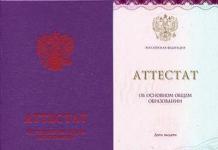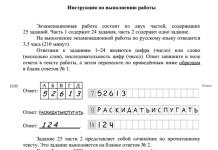An unusual Bashkir-style buza drink is a low-alcohol, rich and very thick drink. The alcohol content in it varies only in the range of 4-6%. The original drink is usually based on buckwheat flour or millet. However, most often, it is customary to use oatmeal to prepare the buza according to the Bashkir recipe. By the way, such a non-trivial drink is widespread not only in Bashkiria, but also in the Caucasus and Crimea. It is often referred to as bosa or bozo. However, in Bashkiria, buza belongs to the category of festive drinks, where it is served as a dessert, expressing special respect and recognition to the guest.
Cooking time - 6 hours.The number of servings is 50.Ingredients
To make a booze, you need to prepare the following components:
- hercules - 1 kg;
- butter - ½ tbsp.;
- water - 10 l;
- pressed yeast - 1 tsp;
- wheat flour - 0.5 tbsp.;
- granulated sugar - 150 g.
How to make booze drink
Every culinary specialist, regardless of his skills and abilities, can cope with the implementation of the buza drink recipe.
- It is worth starting the preparation of a drink with the preparation of the main component. To do this, the hercules will need to be crushed into crumbs or flour.

- Wheat flour should be lightly dried in a dry frying pan.

- The resulting oatmeal powder should be mixed with wheat flour. In this dry mixture, you must add the butter, which was previously brought to a boil. Everything is well mixed.

- Further relying on step by step recipe Bashkir buza with a photo, you will need to pour a little boiling water into the resulting composition. The mass is mixed.

On a note! After adding water, the mass should acquire the consistency of a dough.
The mixture should be removed in heat for 30 minutes, after which a little more hot water should be poured into it and cooled naturally to room temperature. Then granulated sugar is added to the blank for the booze and diluted yeast is poured. The mass is aged until fermentation and again diluted with hot water.
- It remains only to strain the mixture through a colander with small cells or through a sieve. The mass that has not "left" is again diluted with boiling water, after which it must again be filtered.

The finished drink is left in a warm place so that it begins to ferment. And the original drink is served in tall glasses or bowls. If necessary, the buza is diluted with sugar and decorated with cinnamon powder.
Video recipes for making buza in Bashkir
So that there are no difficulties with the preparation of buza in different variations, you should use the tips in the form of videos:
Buza is a drink common among the Turkic-speaking peoples. Usually the product is prepared from peeled oats. Each woman has her own cooking technology. Most housewives make a drink in the winter. Buza has the following useful properties:
- removes toxins from the human body;
- cleanses the liver of harmful impurities;
- rich in minerals, trace elements and vitamins;
- helps fight hangovers;
- thanks to the calorie content, it saturates perfectly.

This product is an invigorating drink with an alcohol content of 5-7%. Buza is thick, has a sweetish aftertaste and is widely used in Bashkir cuisine. However, other nations also appreciate the drink:
- Crimean Tatars;
- Kazakhs;
- Uzbeks;
- Tatars.
A bit of history
The once famous drink was made from flour such as:
- corn;
- millet;
- buckwheat;
- oatmeal.
Buza is considered to be a product intended for consumption on holidays. A drink is served as a dessert. If this product is present on the table, it means that the hosts of the holiday highly appreciate the invited guests.

In the old days, buza was common in the Crimea. At that time, the drink was sold in local eateries, shops and shops. Rice Turkestan was considered the strongest buza, and millet was considered the least strong. The latter was made by the Caucasian, Ryazan and Kazan Tatars. Fermentation produced lactic acid, fats and carbonic acid. The latter formed bubbles. The composition was as follows:
- pure bottled water;
- Wheat flour;
- millet;
- millet.
All components were mixed and cooked to a porridge-like consistency. Then the resulting mass was cooled, after which it was placed in a wooden bowl. After some time, the dough turned sour. Hot water was poured into a container with sour dough, and then, using a sieve, the liquid was poured into the boiler. It is important that at this point the dough on the sieve needed to be rubbed so that it mixed well with the water. If desired, raisins or honey were added to the resulting mixture. After 2-3 hours, some ice was poured into the boiler. This was required to give the final product a marketable appearance. The master who prepared the buza was called buzachi.
Recipe
The finished buza has a thick consistency and the color of melted butter.
Composed of:
- 2 liters of bottled water without gas;
- 300 grams of oatmeal;
- a teaspoon of wheat flour;
- 100 grams of granulated sugar;
- a tablespoon of dry yeast;
- 50 grams of butter.

Recipe:
- Prepare a deep container. Wash oatmeal. Fill the prepared container with warm water.
- Place clean grain in water. Cover the dishes with a lid and soak the cereal for 35-40 minutes.
- Strain the grain and then dry it. Grind dried grains.
- Heat up a frying pan, then place butter on it.
- Add wheat flour and boiling butter to oatmeal. Stir the prepared mixture thoroughly.
- Pour half a liter of boiling water into the resulting mass. Mix gently. The mixture should be pasty.
- Keep the product warm for 30-40 minutes. Pour hot water into the aged mass, after which the mixture is thoroughly mixed. Add granulated sugar and diluted yeast.
- Refrigerate the product. Leave to ferment for 40 minutes.
- Pour boiling water into the resulting mass. Mix the mixture gently, then, using a sieve, strain it. Dilute the mass remaining in the sieve in heated water, and then strain.
- Leave the strained bouzou to ferment until it acquires a sour taste.
0 h 1 min
Training
2 h 0 min
Cook
On our website there are several options for oatmeal drinks from Russian cuisine. But it turns out that cereal kvass is also popular in the gastronomy of other nations. Thanks for the new culinary knowledge.
Buza is a popular drink in both Bashkir and Tatar cuisine, served as a dessert and special respect for the guest. Buza is a sweet, thick drink with the color of baked milk. By tradition, oatmeal is used, as well as oatmeal (hercules) to speed up cooking. You can store buza in a cold place for several days. Variations of buza can be found in the cuisines of other Turkic peoples: among the Turks, bose is made with bulgur and served with caramelized chickpeas, while among the Kazakhs and Kyrgyz, the drink is prepared on the basis of millet
On our website there are several options for oatmeal drinks from Russian cuisine. But it turns out that cereal kvass is also popular in the gastronomy of other nations. Thanks for the new culinary knowledge.
Buza is a popular drink in both Bashkir and Tatar cuisine, served as a dessert and special respect for the guest. Buza is a sweet, thick drink with the color of baked milk. By tradition, oatmeal is used, as well as oatmeal (hercules) to speed up cooking. You can store buza in a cold place for several days. Variations of buza can be found in the cuisines of other Turkic peoples: among the Turks, bose is made with bulgur and served with caramelized chickpeas, while among the Kazakhs and Kyrgyz, the drink is prepared on the basis of millet
On our website there are several options for oatmeal drinks from Russian cuisine. But it turns out that cereal kvass is also popular in the gastronomy of other nations. Thanks for the new culinary knowledge.
Buza is a popular drink in both Bashkir and Tatar cuisine, served as a dessert and special respect for the guest. Buza is a sweet, thick drink with the color of baked milk. By tradition, oatmeal is used, as well as oatmeal (hercules) to speed up cooking. You can store buza in a cold place for several days. Variations of buza can be found in the cuisines of other Turkic peoples: among the Turks, bose is made with bulgur and served with caramelized chickpeas, while among the Kazakhs and Kyrgyz, the drink is prepared on the basis of millet
Bosa - how to make this drink at home?
Boza is very p popular drink in Bulgaria. It is a fermented drink that contains 0.5% alcohol.
Bulgarians associate the taste of e that drink with memories of your childhood e, but this drink is part of a lot centuries of culinary tradition.
Boza, besides being tasty,it is very nutritious. The drink containsproteins, carbohydrates, vitamins and mineral salts.
Bosa was historically produced as early as 8,000 years ago . There are data that show that prepared even in ancient Mesopotamia.
Because of e e taste, nutritional properties and beneficial effects on the body, Bosa was a very popular oh in the Ottoman Empire.
In the past, boz u was made from millet flour. First baked flour, and then boiled in a pot of water. It took about three hours. After the mixture would be ready, she was poured into large bowl and add yeast. After that, the mixture was left for aboutcool down for eight hours.
After this master add more sugar, strain the resulting mixture. bosa pi whether sweet or sour.
Currently, instead of flour from millet used wheat flour to make a bose.
Here is one tried and tested recipe forcooking bose.
Required products:
water - 5 l
flour - 2 cups
sugar - 2 cups
For sourdough:
water a - 1 glass
sugar - 1 tbsp
flour - 2 s.l.
leaven, with cooking method:
At first sourdough is being prepared. For this purpose flour needs to be baked, it is important that it does not burn out. During cooking, the flour must be constantly stirred.. Then add sugar and water. Mix well and leave the dish with the liquid in a warm place till bubbles will not appear, you need to stir the mixture from time to time.
After sourdough ready, you can start cooking boz at . INfrying pan needs to be baked flour. Stir constantly flour toshe didn't get burned.
The flour should turn a light pink color. After the flour but baked, you need add 1/2 tea cup of warm water. mix ive to get a homogeneous mixture.
Pour this mixture into a saucepan and add the rest of the water.
It is necessary to put a pan with a mixture on the stove, cook on low heat, add those there sugar, stir constantly. After the mixture boils, leave it on the fire for another 6 - 7 minutes, continuing to stir. Then with take the pot off fire. Let the mixture cool down.
After the mixture has cooled, add those one tea cup leaven which has been pre-prepared.Keep the liquid warmtwo or three days. This is important in order to fermentation started. After that, the drink must be stored in a refrigerator. Boz can be bottled for ease of use later.
From the finished bose, you can leave one glass to useit as a starter for next time .
As you know, the word "buza" in Russian is a synonym for the words "nonsense", "nonsense", "nonsense". Why this happened is not clear. After all, buza is a traditional drink of the Turkic peoples, the original analogue of our kvass, which is not only rather troublesome to prepare, but also tasty and very useful for the body. And here is another one-root Russian word- "buzz" - already better reflects the essence of things, because under this tonic and slightly alcoholic drug one is drawn to play tricks! In general, we read the recipes and start buzzing!
Now on the Internet you can find a lot of ways to make buza at home, but these recipes mainly include yeast and refined sugar - ingredients that were hardly available to the ancient Bashkirs or Kyrgyz. Unless it was possible to capture some Ashan in a raid, and in the Middle Ages there were still not so many of them as they are now.
In fact, buza is initially a very low-alcohol drink, similar to Russian kvass, that is, a product of double, alcoholic and lactic acid fermentation (you can read about the correct yeast-free kvass in articles and). From here, the beneficial properties of bouza also follow - a beneficial effect on the intestines and stomach, help in the digestion of fatty foods, a calming and anti-stress effect - all this applies only to a drink prepared without the participation of baker's or alcohol yeast. As soon as Saf-Levure and sugar come into play, the healing properties immediately disappear. On the other hand, invigorating and amusing properties sharply increase, which, in general, is also not bad.
Today we will consider four buza recipes at once - three of them are modern, with the use of yeast, and one is an old Turkestan one, without yeast, with saccharification of rice flour with millet malt - almost like in beer. By the way, in all recipes, yeast can be completely replaced with ordinary rye sourdough (in the recipe for malt kvass, it is described detailed recipe), having received not only a traditional, but quite an authentic drink - at least using the technology of double fermentation. Well, let's move on to the recipes - but first, a little theory.
When exactly the drink "Buza" appeared and who invented it is a mystery. Historians tend to think that the Mongols were preparing it even before the Ig, and together with the dashing slanting horsemen, the buz spread among the peoples of Central Asia - the Turkmen, Bashkirs, Kirghiz, Tatars - then "moved" to the Caucasus and the Crimea, penetrated into Turkey, where gained immense popularity. The Turks brought their drink to the Balkans and Eastern Europe, where many peoples also fell in love with it - especially the Albanians and Bulgarians. Buza is also popular in Romania, only here it is called differently - “Bragă”. Sounds familiar, doesn't it?
Disputes about whether booze should contain alcohol or not have not subsided for more than one hundred years. How - after all, this drink is in use, first of all, in Islamic countries. For example, many Turks associate the spread of the bose with the name of the legendary dervish Sara Saltyk, others dispute this theory, arguing that well, a righteous person, a devout Muslim, could not popularize, albeit weakly, but still - alcoholic drink. So, most likely, that same first buza, like kvass, almost did not contain alcohol. Later, stronger versions of the drink began to be prepared, which, back in the Middle Ages, began to be distilled into araka - strong vodka, because, as you know, distillation technology was invented in Asia. In the 16th century, Sultan Selim II completely banned buza, as they began to add ... opium to it! Yes, here's an invigorating drink for you. I must say right away that we will not have such a recipe today.
In general, there are several main types of buza, depending on the national and agrarian traditions of the region where it is prepared. The most common variety of the Buza drink in our country is Bashkir, made from oatmeal. The second popular buza is Crimean Tatar, made from millet. In Turkestan and Uzbekistan, rice flour is used for its production (the most it is!), And in Asia Minor, in the Balkans and in Eastern Europe - corn, rye and wheat, they only call it “bosa” here. In general, you can make a buza from any cereal, like beer - there would be a desire.
Cooking buza at home - a recipe from hercules
The simplest, most affordable and common recipe for making Bashkir buza. Initially, whole oats were crushed in the recipe, which were steamed, fried and crushed in a special way, but now it is quite possible to do without oatmeal- all the preparatory work for us has already been done by the manufacturer.
Grind oatmeal in a blender or coffee grinder into fine flour. Add wheat flour. Melt the butter over high heat, pour boiling into the dry mixture, pour two cups of boiling water. Mix everything thoroughly until a homogeneous slurry is formed, wrap and leave for half an hour. After that - open and add another 2 liters of warm water, mix the sugar again thoroughly and add the yeast. After two to four hours, the mass should begin to “show signs of life” - foam, exude a sour smell. When this happened, add the rest of the water to the drink, mix, cover with gauze and rearrange in a warm place for 24-32 hours. After that, the buza must be separated from the grains - the remnants of flour, spilling it through cheesecloth or dense fabric, and rearranged in a cold place to stop fermentation. You can add sugar to taste. If you pour the booze into corked bottles, it will become slightly carbonated, like kvass. Ready!
How to make booza drink from bulgur
More complex and interesting option buza, whose homeland is considered the Balkans and Turkey, something similar is being prepared by the Albanians to this day. The recipe uses yogurt - you need to take exclusively unsweetened and not pasteurized, best of all - homemade, on sourdough, since this ingredient should start lactic fermentation in the drink.
There is nothing particularly complicated in the recipe either. We take 2.5 liters clean water and soak the bulgur overnight, for 10 hours. After that, put it on the fire and slowly cook for 2 hours. Now the mixture needs to be crushed with a smaller submersible blender and filtered in any convenient way, and the grains - that is, strained cereals - should be poured with all the remaining water and put back on the stove, boiled for another hour, after which - filtered again. We no longer need the shot, there is nothing of value left in it.
We make a primitive sourdough from wheat flour - boil it with a small amount of water to a creamy consistency, dissolve the sugar, let it cool to 30 degrees and add the yeast. Half an hour later, when the yeast has started to work, pour the whole thing into bulgur broth, send yogurt and vanilla sugar there. After two days of exposure at room temperature, everything is ready! It is best to store the booze in the refrigerator so that it does not continue to “buzz”, that is, to wander.
Bouza recipe from millet - Crimean version
A modern recipe for the Buza drink, which is still used by the Azov Greeks, evicted from the Crimean peninsula in the 18th century. By the way, the very word "buza" most likely comes from the ancient Iranian name of millet, and this is precisely millet. So this option is probably the most correct in terms of the composition of cereals.
Pour millet with three liters of water, put on a slow fire and cook until the porridge is boiled. In the process, we take flour and pour a couple of liters of boiling water, mix and cool. We breed yeast in half a liter of water with a couple of tablespoons of sugar, mix and pour into the flour mixture, again mix everything thoroughly and leave at room temperature for 4 hours, after which we pour it into boiled and cooled millet porridge. We put the whole thing on fermentation for another 12 hours.
We shift the fermented mass into a sieve or a large colander and rinse with the remaining water according to the recipe to wash everything out of it, except for hard grains. We additionally squeeze the pellet, and then throw it away. We add sugar to the liquid to taste, leave to ferment in a warm place for another 12-18 hours, after which we move it to a cold place. Ready!
Turkestan buza from millet malt and rice flour - no yeast
The only millet and rice bouza recipe to date that does not use yeast. I doubt that you will specifically germinate millet malt before making buza, so we just take any green non-fermented malt that comes to hand.
To begin with, rice flour must be diluted with three liters of water and boiled until a thick “paste” is formed. The mass must be cooled, covered with a towel and kept at room temperature for three days. After that, a pan or cauldron is taken, the walls of which are thoroughly lubricated butter- this must be done, firstly, for the correct consistency and taste of the future bouza, and secondly, so that the rice does not burn. We add all the rice “porridge” and three more liters of water to the container, bring it to a boil again and, stirring thoroughly, cook for another hour.
Pour water into the mass until it reaches the consistency of thick sour cream - about 3 more liters will be needed. The mixture should cool to a temperature of 60-70 degrees, after which crushed malt can be added to it. Mix everything thoroughly, wrap and leave for another hour, then cool, cover with gauze and leave for two days for fermentation. Now the almost ready bouzou needs to be filtered from the grains and moved to the refrigerator. In a slightly carbonated form, this drink will be even tastier!
As we can see, all today's buza recipes at home are quite reproducible, in fact it is something in between and kvass. The most important thing is that if you are taking your first steps towards brewing, you can practice working with grain crops, gain invaluable experience, and besides, “ by-product"- a delicious, healthy, tonic drink!



































